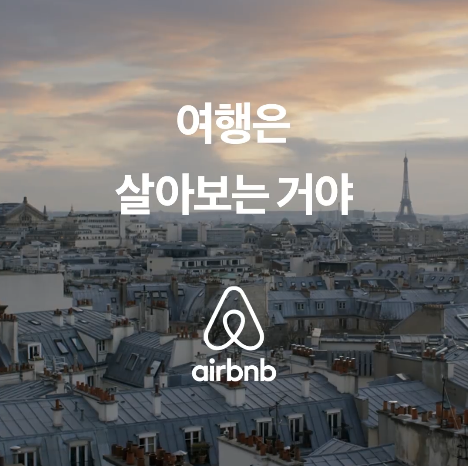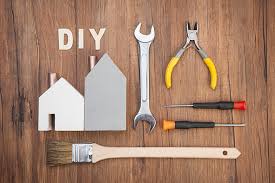Perhaps, as a response to the continuing malaise of the world economy or the growing number of single households, YOLO (‘You Only Live Once’) has become the catch-all phrase for a new generation. YOLO, a new outlook on life that places value on consumption in the moment - enjoying every moment to its fullest so as to escape the economic uncertainty of our present times. This new trend has penetrated our lives so much so that it is now used as a tool to attract new consumers to various markets, but where did YOLO come from, and what, if anything, can it teach us?
YOLO: From Where, Now Where
 |
| The former U.S President Barack Obama promoting ObamaCare |
Firstly, the acronym YOLO was popularized by the 2011 song “The Motto” by rapper Drake. Also, in 2016, former U.S President Barack Obama promoted his signature health care law ObamaCare in a video by BuzzFeed Motion Pictures. In this video, there’s a scene where he wields a selfie stick and says, “YOLO, man.” In Korea, YOLO was popularized in 2016 by the variety show “Youth over Flowers in Africa”. Here, a foreign girl kept saying YOLO! to four Korean actors travelling around Africa. In many ways, YOLO has become a powerful trend especially among the youth of the world.
However, companies and consumers have not been slow in applying YOLO to their lives. Time commerce apps are one example of how companies use YOLO to their benefit. Such an app allows a company to sell, at a low price, products (ranging from food to concert and plane tickets to hotel bookings) whose sell-by date is fast approaching. The two representative time commerce apps are Daily Hotel (hotel reservation app that has seen more than five million downloads) and Sale Tonight (offers various journey-related products and services, including lodges at sale prices). According to the YOLO attitude, you are free to consume what you want right now at this very moment, with no thought of saving for the future. This is the reason time commerce apps have taken center stage under the international spotlight. Secondly, we can also see how companies use YOLO as a strategy through ‘experiential marketing’. The most noticeable pattern of consumption of people living the YOLO life is they consume the ‘value’ of a product rather than buying it just for its utility. Some professionals believe that the market will become dominated by the concept of buying and selling ‘experiences’. Since people who chose to live a YOLO life are apt to set much value on experience and sharing rather than just possessing, some companies do ‘skin-ship marketing’ that puts an emphasis on experiencing products by attracting the participation of consumers. For example, especially in the travel industry, Airbnb ran the “Travelling is Living” ad campaign on television in Korea. Through the ad, Airbnb showed that it could highlight the experience of being a native over that of being merely a ‘tourist’.
 |
Also, in the supermarket industry, numerous tasting areas are available for consumers to experience products. For instance, ‘Lottemart’ offers two experience spaces: Hav’eat, the space for eco-friendly organic farming, and It.Street, the accessory select shop that allows consumers to freely try on any new accessories. Lately Starfield Hanam, the second largest shopping mall in South Korea in Hnam, Gyeonggi, has become the hottest experiential shopping and lifestyle mall, with shopping, leisure, entertainment and healing facilities.
What about consumers? How do consumers apply YOLO to their lives? First of all, people with a YOLO outlook tend to look for products with high cost-effectiveness. They don’t save money unconditionally just so as to be able to afford luxuries in an uncertain future. They would rather go for instant gratification and buy what they need and want to ensure their happiness for that day. The result of this being that such people tend to focus on cost-effectiveness more than how fancy a brand may be. And YOLO people also decorate rented houses. In Korea, for a long time, people believed that a rented house was somewhere to stay for a while, not their own home. But, along with YOLO, as single households have increased and newlyweds in their twenties and thirties become more interested in self-expression, a new wave in the interior design industry has flourished as well IKEA, the world’s largest furniture retailer, since at least 2008, selling ready-to-assemble furniture, appliances and home accessories began to sell almost 5,000 home furnishing products in Gwangmyeong, Korea, which was almost 55% of its total products offered. Such amazing sales made IKEA Gwangmyeong No.1 in sales of all IKEAs around the world. As a result, other home furnishing companies like ‘Miniso’, the Chinese low-cost retailer and variety store chain, and ‘Flying Tiger Copenhagen’, the Danish variety store and price point retailer chains now compete for market share in Korea.
 |
Pros and Cons of YOLO
As youth unemployment and economic depression worsens, there are some who worry and even criticize YOLO for being just a way for the youth to escape from reality. According to a 2015 family budget and welfare survey conducted by the Korea National Statistical Office, the Bank of Korea and the Financial Supervisory Service, the property worth of a householder under the age of 30 (average age of 26.9) was 89,980,000 won and the amount of liabilities of the same householder was 15,060,000 won. But this survey included the rich and those who were debt-free, so the validity of this survey is questionable. However, if we limit the survey respondents to those with liabilities, the amount of liabilities of a householder under the age of 30 (average age of 27.3) changes to 29,600,000 won. This means the youth start their working life with a huge debt.
In his book ‘Life Trend 2017’ Kim Yong-sub, a consultant and columnist studying trend insight and business, wrote, “YOLO tells you to have a full life every day since we only have one life. But it also means neither living without any thoughts nor wasting time. If we live a full day today then we can make our tomorrow full as well. If we find happiness today we can find it again tomorrow. If tomorrow is just an uncertain future, today is a specific reality. If anyone asks me when my glory days were, I always say, ‘Right now.’”
Thus, YOLO is a new way to live in the moment, looking for happiness today rather than in an uncertain future. A life without fear or worry where we achieve our goals.
So what positive effects can YOLO bring to us? Firstly, it can mitigate the recession. According to the 2017 January Consumers Trend Survey conducted by the Bank of Korea CCSI (Consumer Composite Sentiment Index), the index of complex consumer mentality has decreased by 0.8% (93.3). This is the lowest it has been in seven years and 10 months (75.0 in March 2009), when Korea was affected by the global financial crisis. If consumption increases due to the spirit of YOLO, then the domestic/global market receives a boost and the recession is eased. Lastly, but most importantly, the pessimistic attitude of Korean youth about their future can change for the better. If we were to choose the hottest keyword of 2016 in Korea, it would have to be ‘Spoon Theory’ or ‘Hell Joseon’, which encapsulates the negative perception Korean youth have for their future because of unemployment, recession and other serious social or economic issues. In contrast, YOLO can give them energy and hope to find happiness and keep their dreams alive even in tough situations.
If anyone asks us who the future of the world is, we would definitely say the youth. But the general and constant negativity reported by the media has the youth, especially the Korean youth, often losing all hope in their futures. However, as YOLO becomes more popular. A change in mindset can lead to a change in life itself. Shall we start a new life riding the crest of this new, inspirational wave, YOLO?
김세연 kimse3693@naver.com
<저작권자 © 인하프레스, 무단 전재 및 재배포 금지>

![[보도] 제43대 총학생회 후보자 공청회 개최돼](/news/photo/202404/11686_5015_2626.png) [보도] 제43대 총학생회 후보자 공청회 개최돼
[보도] 제43대 총학생회 후보자 공청회 개최돼
![[보도] 제43대 총학생회 후보자 공청회 개최돼](/news/thumbnail/202404/11686_5015_2626_v150.jpg)
![[보도] 총학생회장 선거 열려···학생사회 대표자는?](/news/thumbnail/202403/11668_5014_266_v150.jpg)
![[보도] 무전공·계열제 논의···학생은 어디에?](/news/thumbnail/202403/11666_5011_2238_v150.jpg)
![[보도] 인하 70돌, 다양한 행사 이어져](/news/thumbnail/202403/11663_5009_165_v150.jpg)
